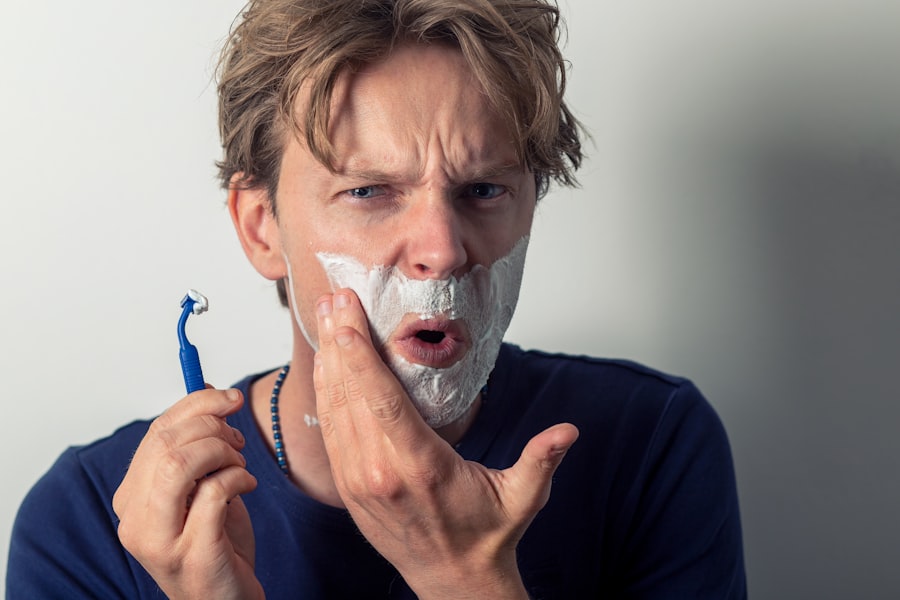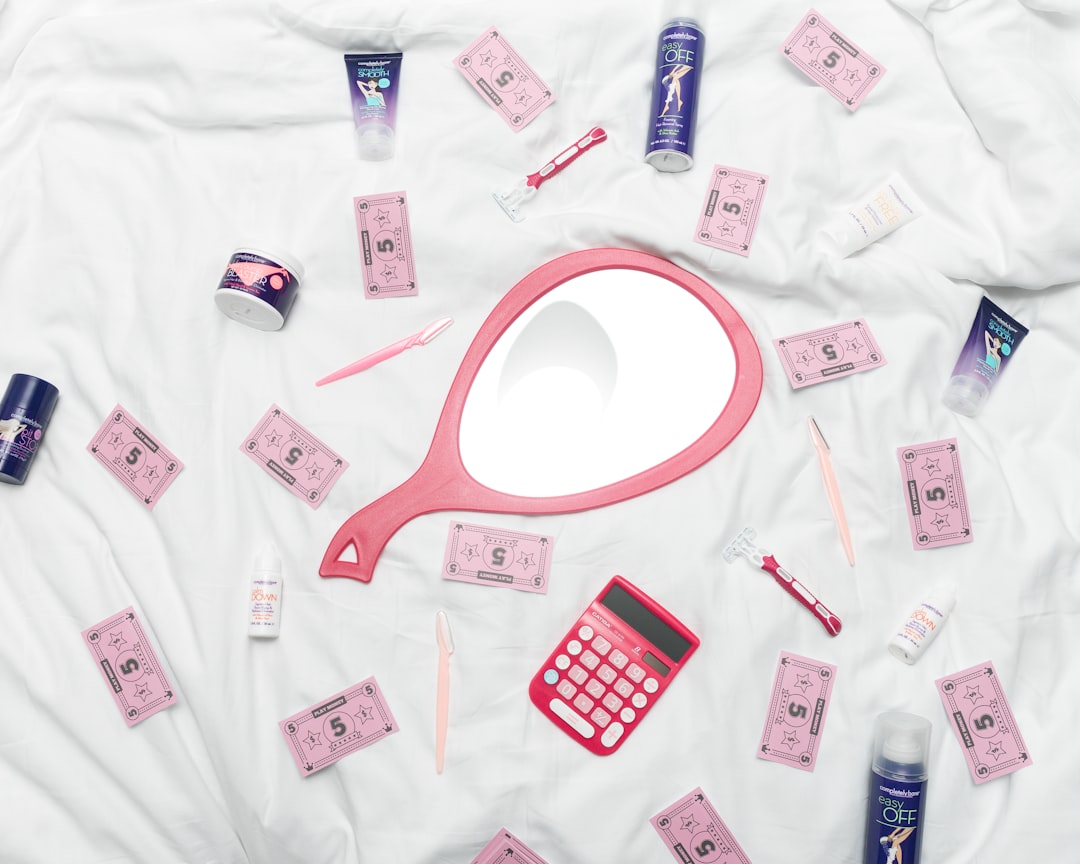Before embarking on any hair removal method, it’s important to prepare your skin to minimize the risk of irritation and achieve the best results. Start by cleansing the area you plan to remove hair from with a gentle, pH-balanced cleanser to remove any dirt, oil, and bacteria. This will help prevent infections and ingrown hairs. After cleansing, gently pat your skin dry with a clean towel.
Next, it’s important to exfoliate the skin to remove dead skin cells and help prevent ingrown hairs. You can use a gentle exfoliating scrub or a loofah to gently buff away dead skin cells. This will also help the hair removal method you choose to be more effective, as it will be able to target the hair directly without any barriers. Finally, make sure your skin is well-hydrated by applying a moisturizer. This will help soften the hair and make it easier to remove, as well as reduce the risk of irritation and redness.
Once your skin is prepped and ready, you can move on to choosing the right hair removal method for your needs.
Key Takeaways
- Preparing your skin before hair removal is crucial for a smooth and effective process. This includes cleansing and moisturizing the skin.
- Choosing the right hair removal method depends on factors such as skin sensitivity, hair type, and desired results. Options include shaving, waxing, sugaring, and laser hair removal.
- Exfoliating the skin before hair removal helps to remove dead skin cells and prevent ingrown hairs, leading to smoother results.
- Managing pain and discomfort during hair removal can be achieved through techniques such as using numbing creams, taking pain relievers, and using cold compresses.
- Post-removal care is important to soothe the skin and prevent irritation. This includes applying moisturizer, avoiding tight clothing, and protecting the skin from sun exposure.
- Common mistakes to avoid during hair removal include over-exfoliating, using dull razors, and applying too much pressure during waxing or shaving.
- Long-term hair removal solutions such as laser hair removal or electrolysis offer more permanent results compared to temporary methods like shaving or waxing.
Choosing the Right Hair Removal Method
There are several hair removal methods to choose from, each with its own pros and cons. The most common methods include shaving, waxing, sugaring, depilatory creams, and laser hair removal. When choosing the right method for you, consider factors such as your skin type, hair texture, pain tolerance, and budget.
Shaving is a quick and easy method that can be done at home, but it can lead to stubble and ingrown hairs. Waxing and sugaring are effective at removing hair from the root, resulting in smoother skin for a longer period of time, but they can be painful and may cause irritation for those with sensitive skin. Depilatory creams are a painless option that dissolves the hair at the surface of the skin, but they can cause chemical burns if left on for too long. Laser hair removal is a more permanent solution that targets the hair follicles, but it can be expensive and may require multiple sessions for optimal results.
Consider your preferences and needs when choosing a hair removal method, and don’t be afraid to try different methods to find the one that works best for you.
Exfoliating for Smooth Results
Exfoliating is an important step in any hair removal routine, as it helps to prevent ingrown hairs and achieve smoother results. By removing dead skin cells, exfoliating allows the hair removal method to target the hair directly without any barriers, resulting in a closer shave or more effective removal of hair from the root.
There are several ways to exfoliate the skin, including using a physical exfoliant such as a scrub or loofah, or a chemical exfoliant such as a glycolic acid or salicylic acid-based product. Physical exfoliants work by physically buffing away dead skin cells, while chemical exfoliants work by dissolving the bonds between skin cells.
When exfoliating, be gentle and avoid over-exfoliating, as this can lead to irritation and redness. Exfoliate the skin 1-2 times per week, depending on your skin type and the hair removal method you choose. If you’re using a chemical exfoliant, be sure to follow the instructions carefully to avoid any adverse reactions.
By incorporating exfoliation into your hair removal routine, you can achieve smoother, more even results and reduce the risk of ingrown hairs and irritation.
Managing Pain and Discomfort
| Category | Metric | Data |
|---|---|---|
| Patients | Pain Level | 7 out of 10 |
| Medication | Usage | Twice daily |
| Therapy | Sessions | 3 times a week |
Hair removal can be a painful and uncomfortable process, especially for those with sensitive skin or low pain tolerance. However, there are several ways to manage pain and discomfort during and after hair removal.
If you’re using a method that involves pulling the hair from the root, such as waxing or sugaring, consider taking an over-the-counter pain reliever such as ibuprofen before your appointment to help reduce pain and inflammation. You can also apply a numbing cream or spray to the area before hair removal to help minimize discomfort.
After hair removal, apply a soothing gel or lotion to calm the skin and reduce redness and inflammation. Aloe vera gel is a popular choice for soothing irritated skin, as it has anti-inflammatory properties and helps to hydrate the skin.
If you experience any discomfort or irritation after hair removal, avoid touching or scratching the area, as this can further irritate the skin and increase the risk of infection. Instead, apply a cold compress or take a cool shower to help reduce inflammation and soothe the skin.
By taking steps to manage pain and discomfort during and after hair removal, you can make the process more bearable and achieve smoother, more comfortable results.
Post-Removal Care
After removing unwanted hair, it’s important to take care of your skin to prevent irritation and promote healing. Start by avoiding any activities that may cause sweating or friction on the treated area for at least 24 hours after hair removal. This will help prevent irritation and ingrown hairs.
If you experience any redness or inflammation after hair removal, apply a soothing gel or lotion to calm the skin and reduce irritation. Aloe vera gel is a popular choice for soothing irritated skin, as it has anti-inflammatory properties and helps to hydrate the skin.
It’s also important to keep the treated area clean and free from bacteria to prevent infections. Avoid using harsh soaps or scrubs on the treated area, as this can further irritate the skin. Instead, use a gentle cleanser and pat the area dry with a clean towel.
Finally, be sure to moisturize the treated area regularly to keep the skin hydrated and prevent dryness. This will help promote healing and reduce the risk of irritation and ingrown hairs.
By taking proper care of your skin after hair removal, you can minimize the risk of irritation and achieve smoother, more comfortable results.
Avoiding Common Mistakes

When it comes to hair removal, there are several common mistakes that people often make that can lead to irritation, ingrown hairs, and unsatisfactory results. One common mistake is shaving with a dull razor or without using shaving cream, which can lead to nicks, cuts, and irritation. To avoid this, always use a sharp razor and apply shaving cream or gel to lubricate the skin and soften the hair before shaving.
Another common mistake is over-exfoliating the skin before or after hair removal. While exfoliating is important for achieving smooth results, over-exfoliating can lead to irritation and redness. Be sure to exfoliate gently and only as often as necessary for your skin type.
Using too-hot water when showering or bathing after hair removal can also lead to irritation and redness. Instead, use lukewarm water to avoid further irritating the skin.
Finally, one of the most common mistakes people make is not moisturizing the skin after hair removal. Keeping the skin well-hydrated is essential for promoting healing and preventing dryness and irritation.
By avoiding these common mistakes and taking proper care of your skin before, during, and after hair removal, you can achieve smoother, more comfortable results.
Long-Term Hair Removal Solutions
For those looking for more permanent solutions for hair removal, there are several long-term options to consider. Laser hair removal is one of the most popular long-term solutions for removing unwanted hair. This method uses concentrated beams of light to target and destroy hair follicles, resulting in permanent reduction of hair growth over time.
Another long-term solution is electrolysis, which uses an electric current to destroy individual hair follicles. This method is effective at permanently removing unwanted hair but may require multiple sessions for optimal results.
For those looking for a less expensive long-term solution, at-home IPL (intense pulsed light) devices are available for purchase. These devices work similarly to professional laser hair removal treatments by targeting the hair follicles with light energy to inhibit future growth.
Before opting for a long-term hair removal solution, it’s important to consult with a dermatologist or licensed professional to determine which method is best for your skin type and needs.
In conclusion, preparing your skin before hair removal is essential for achieving smooth results and minimizing irritation. Choosing the right hair removal method based on your preferences and needs is crucial for achieving satisfactory results. Exfoliating regularly can help prevent ingrown hairs and achieve smoother results. Managing pain and discomfort during and after hair removal is important for making the process more bearable. Post-removal care is essential for preventing irritation and promoting healing. Avoiding common mistakes can help achieve smoother, more comfortable results. Long-term hair removal solutions are available for those looking for more permanent options. By following these tips and taking proper care of your skin before, during, and after hair removal, you can achieve smooth, comfortable results.
If you’re considering laser hair removal, you might also be interested in learning about the average cost of Brazilian laser hair removal. In a related article on In Laser Hair Removal’s website, they delve into the factors that influence the cost of this popular treatment. To find out more about the average cost of Brazilian laser hair removal, check out their informative article here.
FAQs
What are the different methods of hair removal?
There are several methods of hair removal including shaving, waxing, sugaring, threading, laser hair removal, and electrolysis.
How should I prepare for hair removal?
Before any hair removal treatment, it is important to exfoliate the skin to remove dead skin cells and ensure a smoother hair removal process. It is also recommended to avoid sun exposure and moisturize the skin.
What should I avoid before hair removal?
Before hair removal, it is best to avoid sun exposure, as well as any skin treatments such as chemical peels or exfoliating scrubs that may irritate the skin.
How can I minimize pain during hair removal?
To minimize pain during hair removal, it is recommended to apply a numbing cream or gel to the area before the treatment. Additionally, taking a pain reliever such as ibuprofen beforehand may help reduce discomfort.
How long does hair need to be for effective hair removal?
For most hair removal methods, hair should be at least 1/4 inch long to ensure effective removal. However, for laser hair removal, it is recommended to have the hair shaved beforehand.
Are there any risks associated with hair removal?
Some hair removal methods, such as waxing and laser hair removal, may carry risks such as skin irritation, burns, or scarring. It is important to follow proper preparation and aftercare to minimize these risks.






